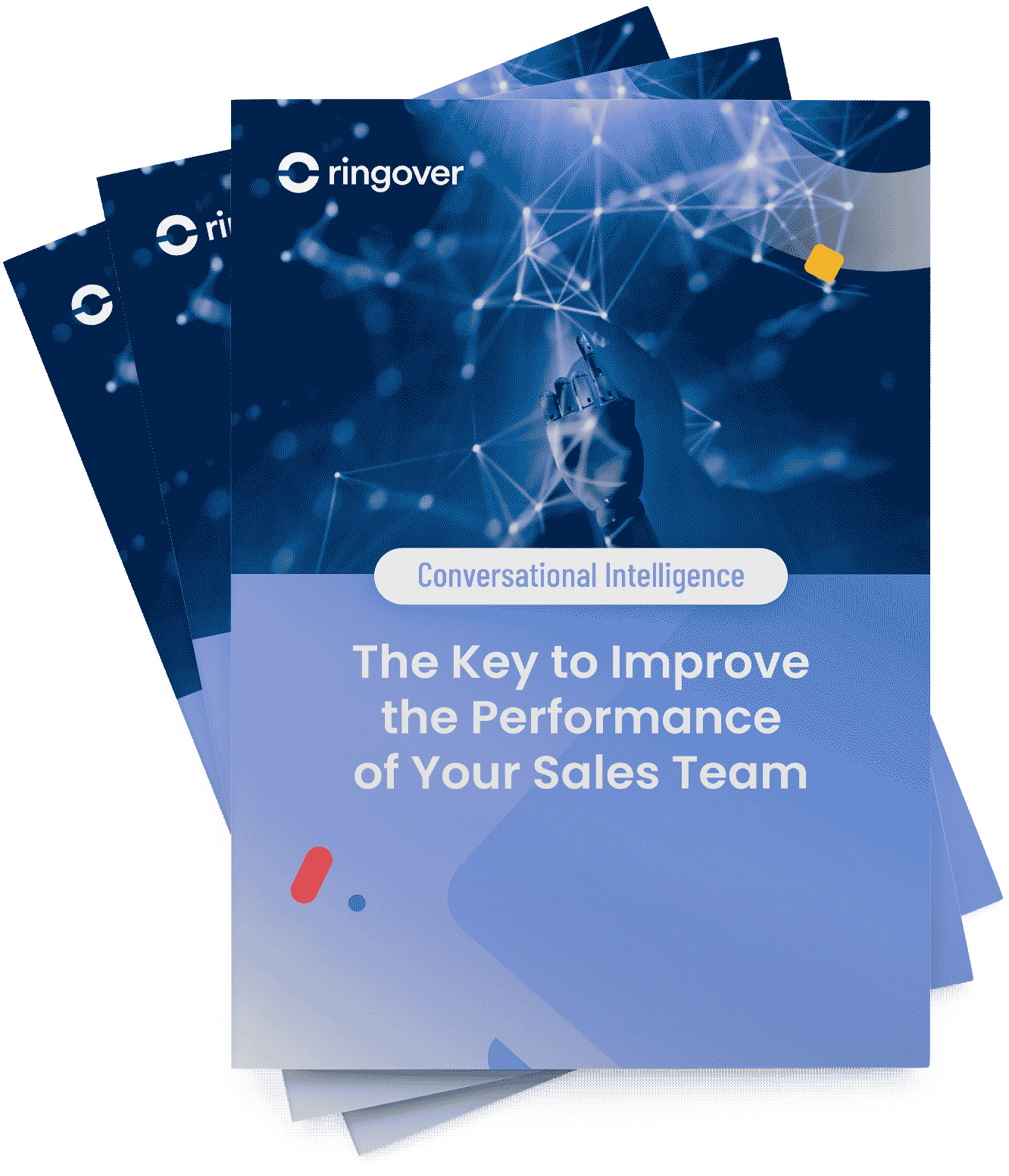Summary
- Understanding the Modern Sales Landscape
- Core Elements of Effective Sales Pitch Training
- Developing a Structured Training Programme
- Advanced Pitch Training Techniques
- Measuring Training Effectiveness
- Technology Integration in Sales Pitch Training
- Overcoming Common Training Challenges
- Creating a Culture of Continuous Improvement
- Industry-Specific Considerations
- Building Your Sales Pitch Training Programme
- The Future of Sales Pitch Training
- Conclusion
- Citations
The current sales landscape presents a significant challenge for sales professionals, with buyers conducting approximately 70% of their research independently before engaging with sales representatives [1]. This fundamental shift means your traditional, feature-heavy sales pitches just aren't cutting it anymore. Modern buyers aren't looking for someone to recite a list of benefits–they want understanding, education, and guidance toward solutions that solve their actual business problems.
That's where effective sales pitch training becomes your secret weapon. It's not about memorising scripts or perfecting your elevator pitch (though those have their place). It's about developing the skills to connect authentically with prospects, understand what keeps them up at night, and present solutions in ways that actually matter to them.
Understanding the Modern Sales Landscape
- 96% of B2B buyers research companies before they even talk to a sales rep [2]
- 80% of B2B sales interactions now happen through digital channels [3]
- 84% of business buyers expect sales reps to be trusted advisors, yet most feel their unique challenges get overlooked [2]
What does this mean for your sales pitch training? Generic, one-size-fits-all approaches are basically dead on arrival. Your team needs to get really good at quickly understanding each prospect's unique situation and tailoring their message accordingly.
This is where tools like Ringover's conversational AI tool become a game-changer. By recording, transcribing, summarising, and analysing sales conversations, teams can spot what messaging actually works and turn every interaction into a learning opportunity that improves customer attraction strategies.
Core Elements of Effective Sales Pitch Training
Building Rapport and Trust
Before you even think about presenting your solution, you need to establish genuine rapport and trust. I'm talking about really understanding their world–not just surface-level small talk about the weather or their office décor.
Effective rapport-building training should focus on:
- Active listening techniques – Teaching your reps to actually hear what prospects are saying (and what they're not saying)
- Emotional intelligence – Reading the room and responding appropriately to how someone's feeling
- Industry knowledge – Being able to speak their language and understand their business context
Discovery and Needs Assessment
Here's where most sales pitches go wrong: jumping straight into solution mode without really understanding what the prospect needs. It's like prescribing medicine before diagnosing the illness.
Your training program needs to cover:
- How to ask powerful, open-ended questions that get people talking
- Techniques for uncovering the real pain points (not just the obvious ones)
- Ways to identify who's actually making decisions and who influences them
- Understanding their buying process and timeline
Storytelling and Emotional Connection
Data tells, but stories sell. Today's buyers connect with narratives that help them envision success. Your sales pitch training should teach reps how to:
- Craft compelling customer success stories that feel relevant
- Use case studies that mirror the prospect's specific situation
- Paint a clear picture of what their future looks like after implementing your solution
- Connect features to actual business outcomes that matter
Handling Objections
Here's a sobering statistic: 60% of customers say "no" four times before they buy [6], but 44% of salespeople give up after the first rejection [6]. That's a lot of missed opportunities.
Effective objection handling training teaches reps to:
- Anticipate common objections before they come up
- Reframe objections as opportunities to provide more value
- Use structured techniques (like "feel, felt, found") without sounding robotic
- Ask clarifying questions to understand what's really behind the objection
Developing a Structured Training Programme
Assessment and Baseline Establishment
You can't improve what you don't measure. Before launching any training initiative, you need to understand where your team currently stands. This means evaluating:
- Product knowledge – Do they really understand what you're selling and why it matters?
- Competitive landscape – Can they articulate why you're different (and better)?
- Industry expertise – Do they understand the prospect's business challenges?
- Communication skills – Are they clear, confident, and persuasive?
Customised Learning Paths
One-size-fits-all training is about as effective as a generic pitch. Your team members have different experience levels, roles, and learning styles. Consider creating:
- Role-based training – Inside sales, field sales, and account managers need different skills
- Experience-level tracks – New hires and seasoned pros require different approaches
- Industry specialisation – Tailored content for different verticals
- Learning style options – Visual, auditory, and hands-on learning opportunities
Practice and Role-Playing
Knowledge without application is just expensive trivia. Your training program needs lots of opportunities to practice:
- Live role-playing with structured feedback
- Video practice sessions with self-review
- Peer-to-peer coaching
- Real-world scenario simulations
This is where conversation intelligence software really shines.Empower by Ringover analyses practice sessions and provide data-driven insights on what needs work, contributing to the 6-20% sales increase that businesses typically see when implementing these strategies [5].
Advanced Pitch Training Techniques
Multi-Channel Approach Integration
Today's buyers expect seamless experiences across every touchpoint. Your pitch training should cover:
- Email pitching – Writing compelling messages that get opened and read
- Video messaging – Using visual storytelling effectively
- Social selling – Leveraging platforms like LinkedIn
- Phone prospecting – Making cold calls that don't feel cold
Research shows multi-channel communication approaches get 28% higher conversion rates than single-channel outreach [7]. That's not a coincidence–it's consistency paying off.
When it comes to implementing multiple channels, Ringover's omnichannel contact centre software provides unlimited calls, video calls, messaging via WhatsApp, social media, and more, in addition to powerful VoIP software features like call campaigns and power dialer.
Data-Driven Personalisation
Generic pitches are dead. Modern sales pitch training needs to emphasise:
- Research techniques for thorough prospect preparation
- Using company and industry data to customise presentations
- Leveraging social media insights for personalised outreach
- Incorporating mutual connections and referrals
Timing and Follow-Up Strategies
Here's something that might surprise you: 80% of deals require five or more touchpoints, but nearly 50% of salespeople give up after one attempt [3]. Your training needs to address:
- Optimal timing for initial outreach
- Strategic follow-up sequences
- Adding value between meetings
- Staying persistent without being pushy
Measuring Training Effectiveness
Key Performance Indicators
You can't manage what you don't measure. Here are the essential metrics for evaluating your sales pitch training:
| Metric | Description | Target Improvement |
|---|---|---|
| Conversion Rate | Percentage of pitches that advance to next stage | 15-25% increase |
| Average Deal Size | Revenue per closed deal | 10-20% increase |
| Sales Cycle Length | Time from first contact to close | 10-15% reduction |
| Win Rate | Percentage of qualified opportunities won | 20-30% increase |
Return on Investment Analysis
Companies that invest in effective sales training see real results. Research shows that good training can move a salesperson's performance from below 70% of quota to over 90% [8]. Organisations using dynamic coaching programs see a 28% higher success rate [9].
To calculate your ROI, track:
- Before and after training performance comparisons
- Revenue directly attributable to training initiatives
- Cost savings from reduced turnover
- Productivity improvements per rep
Technology Integration in Sales Pitch Training
AI-Powered Analytics
Modern sales organisations are leveraging AI to make training more effective. These tools can:
- Analyse conversation patterns to identify what works
- Provide real-time coaching during live calls
- Track skill development over time
- Suggest personalised improvement areas
Conversation Intelligence Platforms
Platforms that record, transcribe, and analyse sales conversations provide incredible training insights. Empower by Ringover helps teams identify what messaging resonates most, enabling more targeted training interventions and improved customer attraction strategies.
When you're looking at how to improve the sales training process and sales performance, Empower has features to help you at every step of the way: pre-calls, during calls, and post-calls.
When you're getting agents ready to face live prospects, Pitch Room makes training and onboarding agents easier and more efficient than ever. Pitch Room is a realistic role-playing tool which provides multiple personas and skill levels for agents to practise with. The artificial technology gives feedback instantly, so agents immediately know how to improve. The result is a sales team that's well-prepared and confident when pitching to real prospects.
For the phone prospecting calls themselves, AIRO Coach is an AI sales coach which accompanies agents during calls. With this tool in place, the AIRO Coach provides contextual tips and key information. Agents will never flub a feature or a price, and AIRO Coach advises agents on how to overcome objections. By continuously learning, agents improve their performance immediately and over time.
Once the call has wrapped, Empower still helps your team decode what's going on with prospects and their own performance. By transcribing, summarising, and analysing interactions to surface advanced AI analytics, Empower transforms your unstructured data into impactful insights.
Virtual Reality Training
Some forward-thinking companies are experimenting with VR for sales training, allowing reps to practice in realistic scenarios without real-world pressure. It's still emerging, but the early results are promising.
Overcoming Common Training Challenges
Resistance to Change
Experienced reps might push back on new approaches. You can overcome this by:
- Showing clear data on training effectiveness
- Starting with voluntary pilot programs
- Highlighting success stories from early adopters
- Getting your top performers to champion the training
Time Constraints
Sales managers often struggle to balance training with quota pressure. Solutions include:
- Microlearning sessions (10-15 minutes)
- Just-in-time training resources
- Integrating training into existing sales processes
- Mobile-friendly content
Skill Retention
People forget–it's human nature. Research shows we can lose up to 50% of new information within an hour [4]. Combat this with:
- Spaced repetition techniques
- Regular practice opportunities
- Peer coaching programs
- Performance reinforcement tools
Creating a Culture of Continuous Improvement
Regular Coaching Sessions
Training isn't a one-and-done event. Regular coaching should focus on:
- Reviewing recent sales conversations
- Identifying improvement opportunities
- Practising new techniques
- Setting specific development goals
Knowledge Sharing
Create systems for top performers to share successful strategies:
- Weekly team pitch reviews
- Internal case study development
- Mentorship programs
- Cross-team collaboration sessions
Performance Recognition
Celebrate improvements to reinforce positive behaviours:
- Public recognition for pitch improvements
- Training completion awards
- Linking skill development to career advancement
- Peer nomination programs
Make training easier and more engaging with Empower by Ringover, which provides individual feedback using AI technology.
Industry-Specific Considerations
Different industries require tailored training approaches. Here's what to focus on:
Technology Sales
- Technical credibility and expertise
- ROI and business case development
- Security and integration concerns
- Scalability benefits
Financial Services
- Trust and regulatory compliance
- Risk mitigation
- Long-term relationships
- Regulatory considerations
Healthcare
- Patient outcomes focus
- Clinical evidence
- Workflow integration
- Safety and efficacy
Manufacturing
- Operational efficiency
- Cost savings demonstration
- Technical specifications
- Reliability and support
Building Your Sales Pitch Training Programme
Here's a practical roadmap to transform your team's effectiveness:
Phase 1: Assessment and Planning (Weeks 1-2)
- Conduct current state assessment
- Identify skill gaps and priorities
- Define success metrics
- Secure leadership buy-in
Phase 2: Content Development (Weeks 3-6)
- Create customised training materials
- Develop role-playing scenarios
- Build assessment tools
- Set up tracking systems
Phase 3: Pilot Programme (Weeks 7-10)
- Launch with a small group
- Gather feedback and refine
- Measure initial results
- Build success stories
Phase 4: Full Rollout (Weeks 11-18)
- Deploy to entire team
- Provide ongoing support
- Monitor progress closely
- Make adjustments as needed
Phase 5: Optimisation (Ongoing)
- Analyse performance data
- Refine content and delivery
- Scale successful elements
- Continuously improve
The Future of Sales Pitch Training
As we look ahead, several trends are shaping the evolution of training:
Increased Personalisation
AI and machine learning will enable hyper-personalised training experiences tailored to individual learning styles and performance gaps.
Real-Time Coaching
Advanced conversation intelligence will provide instant feedback during live calls, making coaching more immediate and actionable.
Virtual and Augmented Reality
Immersive training experiences will let reps practice in realistic scenarios without real-world consequences.
Continuous Learning Platforms
Training will shift from periodic events to ongoing, just-in-time learning integrated into daily workflows.
Conclusion
Effective sales pitch training isn't optional anymore–it's essential for competitive success. In a world of informed, discerning buyers, your team needs sophisticated skills to build authentic connections and present solutions persuasively.
The best programs combine structured learning with practical application, leverage technology for insights and feedback, and create cultures of continuous improvement. When done right, this isn't just training–it's a strategic investment that pays substantial dividends.
Companies with strong training programs consistently see significant improvements in win rates, average deal sizes, and overall revenue performance. The key is taking a systematic approach: assess where you are, build customised training that addresses your specific gaps, and implement ongoing coaching and refinement.
Ready to transform your sales team's effectiveness? Consider how Empower by Ringover can provide the insights and coaching tools you need to maximise your training investment and accelerate performance improvements. Try it today, start your free Empower trial now!
Citations
- [1]https://spotio.com/blog/sales-statistics
- [2]https://highspot.com/blog/sales-pitch-examples
- [3]https://martal.ca/sales-pitch-lb
- [4]https://learningguild.com/articles/brain-science-the-forgetting-curvethe-dirty-secret-of-corporate-training
- [5]https://ringover.com/blog/sales-enablement
- [6]https://invespcro.com/blog/sale-follow-ups
- [7]https://martal.ca/sales-follow-up-statistics-lb
- [8]https://objectivemanagement.com/research-blog/research/the-roi-of-sales-training
- [9]https://td.org/content/atd-blog/sales-training-roi-how-to-prove-your-program-s-value-with-data-driven-results
Published on October 10, 2025.



